top of page
System Membrane
Arch 770-A | Nanotectonica | Spring 2022
In collaboration with Makai Wilson-Charles
Instructor : Jonas Coersmier
Nanotectonica is a speculative study to examine the relation between natural systems and architectural system by using nanotechnology and contemporary design tools together. The study explores structures, organizations and functions in nature at various scales and culminates in a design research and production project creating a novel material system, an intricate assembly or an architectural artifact using computation design and diverse fabrication techniques.
The course is an exercise to start a conversation and understand living systems in a new perspective with regards to their potential integrated applications in architecture and technology, as a response to the current global climate crisis.

SEM (Scanning Electron Microscope) images from various fields and self procured SEM images from various specimens with help from The Simons Electron Microscopy Center. These images are used for physiological studies and design research further.

Gecko Toe Pads
SEM image of Gecko Toe pads in increasing order of magnification. Images sourced from various references.



Gecko Toe Pads
SEM image of Gecko Toe pads in increasing order of magnification. Images sourced from various references.
1/5

SEM images of various Bryozoan Specimens. Images sourced from various references.



SEM images of various Bryozoan Specimens. Images sourced from various references.
1/3

Based on the physiological and formal features, Bryozoan and the Chromatophore cell in the cephalopods are the shortlisted specimens used for the final proposal.
Cephalopod chromatophores and bryozoan colonies can both be considered as decentralized network systems. Cephalopod chromatophores function as a distributed brain through cephalopod bodies to alter their color and texture through muscular expansion and contraction; bryozoan colonies consist of repeated semi-autonomous
Design research and production project - System Membrane
zooids that survive collaboratively. The experiences of one component in a system, a single chromatophore cell or a single autozooid ripple throughout the system.
The combination of these two organic forms develops geometric similarities between the two: in early analytical drawings of the chromatophore, negative spaces formed by the layering of muscle fibers are similar in appearance to the arcs of perforations in bryozoan zooids.

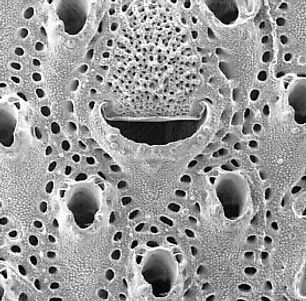


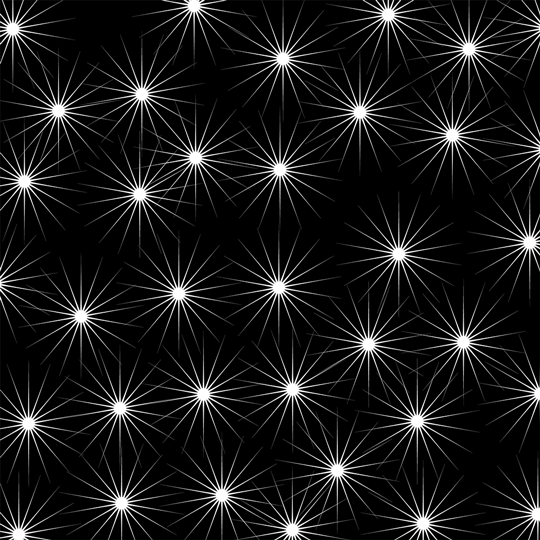
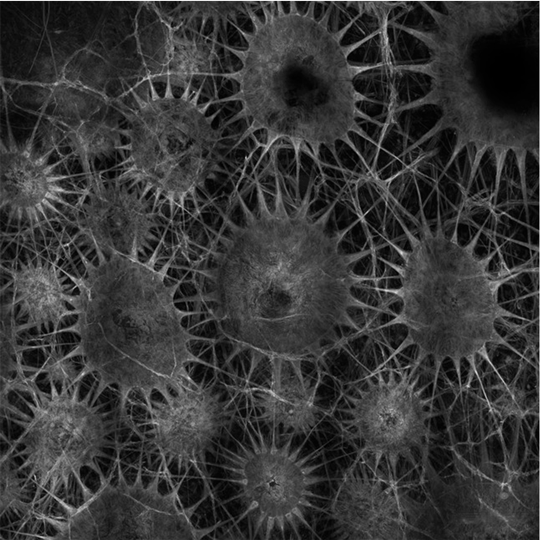





Our research probes a hypothetical organism membrane that combines a system of radial sinews that function as a muscular system, inspired by the physiology of chromatophores, that expand and contract an aligned cartilaginous network of apertures, inspired by bryozoans. The result is a membrane that is able to control the flow of light, heat, air, and matter.



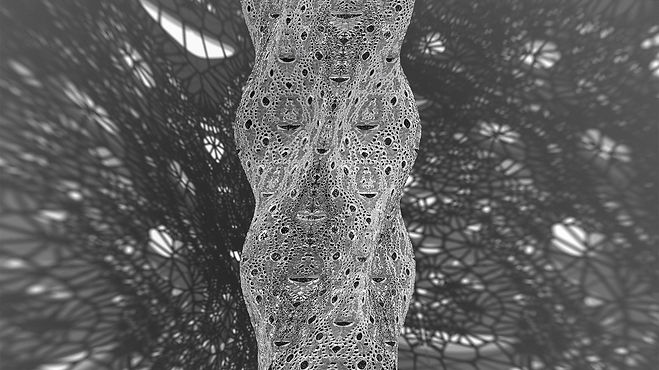

Physical prototypes of this hypothetical kinetic membrane are static, and explore material effects through photography. The aperture network cast in silicone exhibits variable translucency, and sand in the cast sinks to the highest points of the profile, representing ossification. Real ossification would add a level of rigidity, creating certain forms resistant to deformation. The overall form is conceived as a rationalized version of a radially growing organism, and as a cylinder deformed by expansion and contraction in repeating zones.
As a membrane system, the design can also be understood as an architectonic product for modulation of environmental qualities.







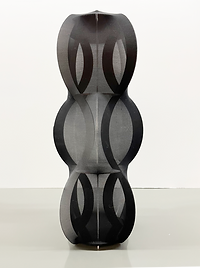
| 816.924.9997
linked In
bottom of page




